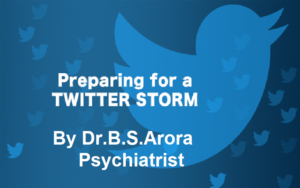
Twitter Storm: An Overview
Twitter is one of the largest and most influential social media platforms in the world. With over 330 million active monthly users, the platform has become a powerful tool for communication, self-expression, and organization. However, as with any popular platform, Twitter also has its downsides. One of the most significant problems faced by the platform is the prevalence of misinformation, hate speech, and harassment. In recent years, these issues have come to a head in the form of Twitter storms, which are mass outpourings of anger, outrage, or abuse directed at a single individual or group.
A Twitter storm is a phenomenon that occurs when a large number of people simultaneously post tweets about a particular topic, often in response to a particular event or piece of news. The tweets are usually negative in tone, and can range from harsh criticism to outright abuse. The intensity of the storm can be overwhelming, and the consequences can be severe. For the individuals at the center of the storm, it can be a traumatic and isolating experience, leading to online harassment, abuse, and even death threats.
The causes of Twitter storms are many and varied. They can be triggered by controversial news stories, political events, or even seemingly trivial matters like a celebrity’s tweet. The storms are often fueled by emotions, particularly anger and outrage, and can quickly spiral out of control as more and more people join in. They can also be fueled by bots and trolls, who use the platform to spread false information and sow division.
The impact of Twitter storms can be far-reaching and devastating. For the individuals targeted, the experience can be traumatic, leading to feelings of anxiety, depression, and even suicide. The online abuse and harassment that often accompany Twitter storms can also have real-world consequences, impacting the victims’ personal and professional lives. In some cases, Twitter storms have even led to offline violence, such as the coordinated attack on the U.S. Capitol building in January 2021.
In an attempt to address the problem of Twitter storms, the platform has introduced a number of measures designed to curb the spread of misinformation, hate speech, and harassment. For example, Twitter has introduced measures to detect and remove bots, as well as tools to report and block users who engage in abusive behavior. The platform has also introduced new policies aimed at cracking down on hate speech and harassment, and has worked to make it easier for users to report abusive content.
Despite these efforts, however, Twitter storms continue to be a significant problem for the platform. The reasons for this are complex, and include the sheer scale of the platform, the difficulty of moderating billions of tweets, and the rapid pace of change in the online landscape. Additionally, Twitter storms are often fueled by deep-seated social and political divisions, which are difficult to address through technical solutions alone.
Bottom line , Twitter storms are a complex and challenging issue that pose a significant threat to the health and safety of users on the platform. While Twitter has taken steps to address the problem, much work remains to be done. Ultimately, the solution will require a multi-faceted approach that combines technical measures with a deeper understanding of the social and political factors that drive these storms. Until then, the threat of Twitter storms will continue to loom over the platform, and its users.
